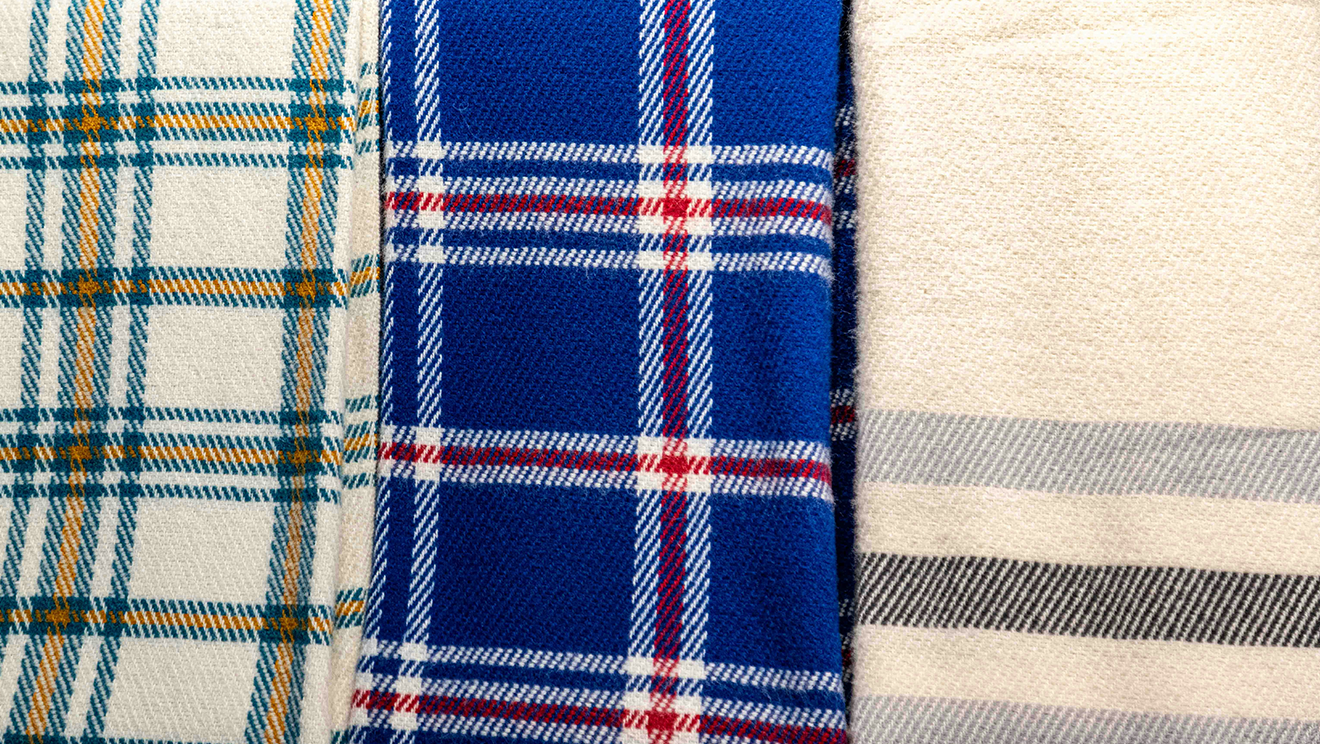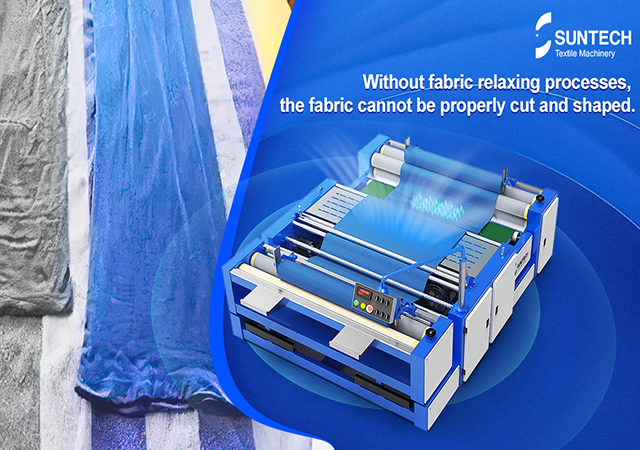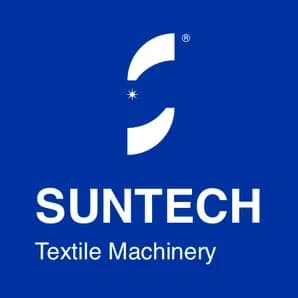
The process of fabric relaxing is pivotal in the textile industry, serving as the backbone of fabric preparation before cutting and sewing. This procedure ensures that fabrics are devoid of internal stresses and are in their most natural state, enhancing the overall quality of the final product. The precision of fabric relaxing can significantly impact the final apparel's fit, feel, and durability. Hence, understanding how fabric relaxing machines, such as the fifth generation Roll to Roll machine from SUNTECH, achieve such meticulous control over fabric properties is essential.
Traditional Fabric Relaxing
Traditional Fabric Relaxing Process
The traditional fabric relaxing process is a crucial precursor to fabric cutting in the textile industry, ensuring that the fabric is free from internal stresses and is dimensionally stable. This process involves several key steps:
1. Receiving and Unrolling
Upon receipt from the manufacturer, fabric rolls are carefully unrolled. This initial step is fundamental because it begins the process of releasing tension that has been built up in the fabric during its creation and subsequent rolling.
2. Relaxation Period
After unrolling, the fabric must rest, typically for a period ranging from 12 to 48 hours, depending on the type of fabric. This relaxation time allows the fibers to naturally contract and stabilize, which is critical for maintaining the fabric's shape and dimensions during and after the manufacturing process.
3. Spreading and Laying
Post-relaxation, the fabric is spread out on large tables to ensure it is flat and smooth. This is crucial for accurate cutting, as any folds or unevenness can lead to defects in the final product. The environment in which this is done should be controlled to prevent any reintroduction of stresses into the fabric.
4. Final Relaxation Before Cutting
Just before cutting, a final relaxation step may occur, particularly for fabrics that are prone to re-tensioning. This ensures any residual stresses are alleviated, securing both the quality and the conformity of the cut pieces to their intended dimensions.
These steps collectively ensure that the fabric's dimensional stability is maintained, which is crucial for achieving high-quality finished garments. This detailed approach to fabric relaxation highlights its importance in the textile production chain, directly impacting the effectiveness of subsequent manufacturing stages and the overall quality of the final apparel products.
The Advantages and Disadvantages of Traditional Fabric Relaxing
The traditional fabric relaxing process offers both distinct advantages and notable disadvantages which are essential for stakeholders in the textile industry to understand for effective production management.
Advantages
● Accurate Measurements and Cutting: The relaxation of fabric before cutting is pivotal for achieving precision in measurements, which ensures the patterns fit correctly when assembled into garments.
● Dimensional Stability: By allowing the fabric to rest and return to its natural state, the process minimizes the risk of dimensional changes post-production, thereby enhancing the structural integrity of the textile products.
● Improved Fit and Quality: Relaxed fabrics contribute significantly to the fit and drape of garments, making them more comfortable and appealing to consumers.
● Reduced Fabric Defects: The process helps in reducing common fabric defects such as twisting and puckering, which can significantly detract from the aesthetic and functional quality of the final product.
Disadvantages
● Time-Consuming: The need for fabric to rest, which can range from several hours to a full day depending on the material type, potentially delays the overall production timeline, which can be a critical drawback in fast-paced manufacturing settings.
● Space Requirements: Adequate space must be allocated for the fabric to lay flat during relaxation, which can be a challenge in facilities with limited space.
● Potential for Inconsistent Results: Since traditional fabric relaxing often involves manual handling, variations in environmental conditions and human error can lead to inconsistent results, impacting the uniformity and quality of batches.
Understanding these pros and cons is crucial for textile manufacturers to optimize their processes, enhance product quality, and effectively manage production timelines. It's a balancing act between ensuring fabric quality and managing production efficiency.
Problems Associated with Fabric that Hasn't Relaxed Properly
Improper fabric relaxation can lead to several issues in garment production and the final quality of the clothing items:
● Shrinkage: Fabric that hasn't been adequately relaxed tends to shrink after the first wash, which can significantly alter the size and shape of a finished garment. This change can render a garment unwearable and lead to customer dissatisfaction.
● Inaccurate Sizing: Without proper relaxation, fabric dimensions can remain unstable. This instability can result in garments that are cut and sewn based on incorrect measurements, leading to fit issues and inconsistencies in sizing across products.
● Puckering Seams: Tension in the unrelaxed fabric can cause the seams to pucker, particularly after the item is laundered. Puckered seams are not only aesthetically displeasing but can also affect the comfort and durability of the garment.
● Distorted Shape: Fabrics that are cut and sewn while still tense fail to lay flat and conform to the intended garment design, causing the final product to lose its shape or drape. This distortion can affect the garment's fit and overall look, significantly reducing its marketability.
● Uneven Hems: Similar to puckering seams, uneven hems can occur when the fabric has not been allowed to relax adequately before being cut and hemmed. This issue often becomes apparent after the first wash, when the fabric finally relaxes and reveals uneven lengths.
● Difficulty in Sewing: Unrelaxed fabric is more challenging to cut and sew. It may not lie flat, making it difficult to follow cutting patterns accurately. Moreover, sewing through tense fabric can be more laborious and can strain equipment, potentially leading to production delays and increased wear on machinery.
Addressing these issues is crucial for maintaining high standards in garment quality and ensuring customer satisfaction. Proper fabric relaxation helps in stabilizing fabric dimensions before cutting and sewing, thus preventing these common problems in the apparel industry.

Advanced Fabric Relaxing Machine
SUNTECH Roll to Roll Fabric Relaxing Machine
Feature | Description |
Vibrating Conveyor & Air Flotation Table | Ensures complete tension release, critical for maintaining fabric quality and preventing defects. |
24 Hours Saving | Eliminates the traditional 24-48 hour fabric resting period by relieving material tension, allowing immediate transition to cutting and significantly boosting factory throughput. |
Direct-to-Cutting Capability | Minimizes handling time between relaxing and cutting, streamlining production workflows. |
Advanced Monitoring Capabilities | Features like real-time length and width measurements allow for precise control during the relaxing process. |
ERP Integration | Facilitates data management and process optimization, crucial for modern manufacturing environments. |
Optional Accessories | Includes width measuring device, automatic weighing device, and linear fabric end cutter, enhancing functionality and adaptability. |
The SUNTECH Roll to Roll Fabric Relaxing Machine (5th Generation) represents a significant advancement in the field of fabric processing, providing a modern solution that addresses the limitations of traditional fabric relaxing methods. This machine incorporates state-of-the-art technologies such as a vibrating conveyor and an air flotation table, which together ensure 100% tension release. This advanced system allows the fabric to relax fully without the introduction of manual handling errors or environmental inconsistencies that often plague traditional methods.
The direct-to-cutting feature streamlines the workflow, reducing the time between fabric relaxing and cutting, thus significantly speeding up the production process without sacrificing the quality of the fabric handling. These features not only enhance the efficiency of fabric processing but also improve the dimensional stability and quality of the final textile products.
The SUNTECH machine also features advanced monitoring capabilities, including real-time length counting and width measurement. This ensures precision in handling and further reduces the likelihood of errors that could lead to fabric defects or inconsistencies. Integration with ERP systems is another standout feature, enabling better data management and process optimization in textile manufacturing. These technological advancements make the SUNTECH Roll to Roll Fabric Relaxing Machine a pivotal tool in modern textile production, setting new standards in fabric quality and operational efficiency.
Next Steps
To explore how the SUNTECH Roll to Roll Fabric Relaxing Machine can revolutionize your textile production, we invite you to get in touch with us. Our team is ready to assist you with expert advice and tailored solutions that meet your specific needs.
Contact SUNTECH:
Email: sales@suntech-machinery.com
Business WhatsApp: +86-13777818208
Reach out today to learn more about our products and how we can help elevate your manufacturing processes to the next level!








